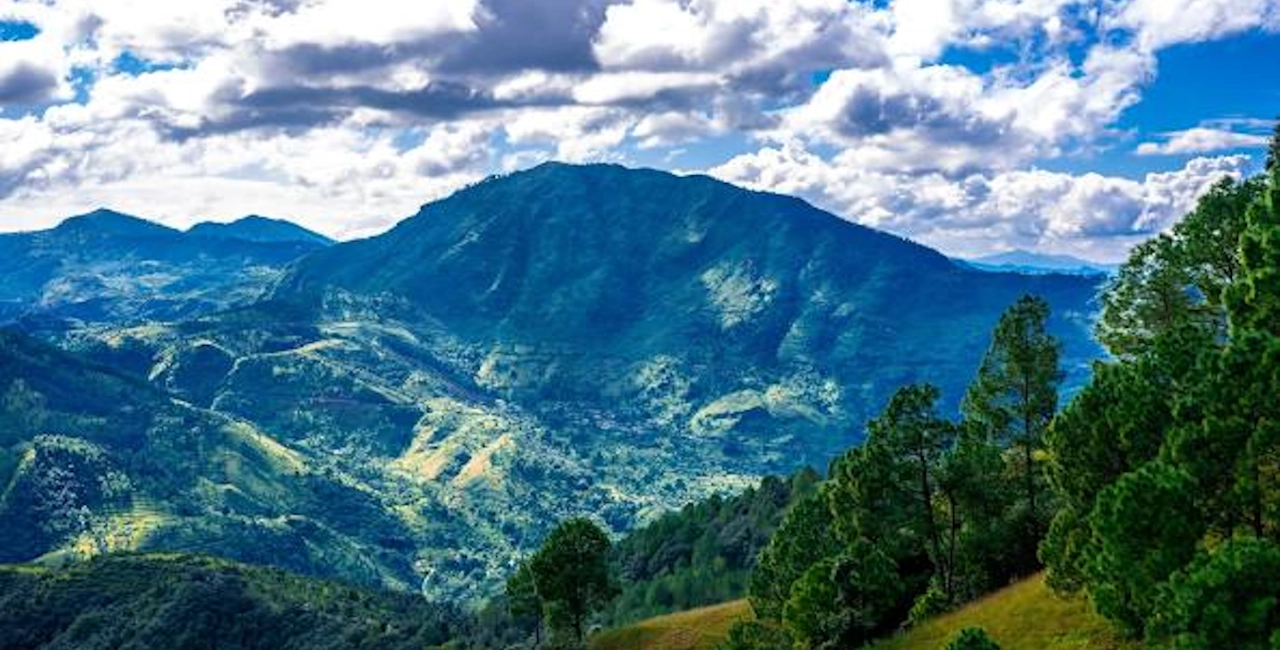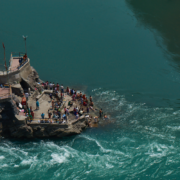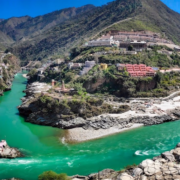
Pithoragarh: A Gateway to the Himalayas
Nestled in the easternmost corner of Uttarakhand, Pithoragarh is a small but significant town often referred to as the “Mini Kashmir” of India. Known for its pristine natural beauty, the district holds historical, cultural, and ecological significance. Located in the Kumaon region, it is bordered by Nepal in the east and Tibet (China) in the north, making it a strategic point on India’s map.
Geographic and Strategic Importance
Pithoragarh is situated at an altitude of 1,514 meters above sea level. The town is surrounded by lofty mountains, verdant valleys, and serene rivers, giving it a landscape that rivals some of the best-known tourist spots in the Himalayas. The town serves as a base for many treks and pilgrimages to the higher reaches of the Himalayas, including the revered Kailash Mansarovar Yatra and the Om Parvat trek. It is also a gateway to the Darma, Johar, and Byans valleys, which are historically important trade routes with Tibet.
The district’s proximity to Nepal and Tibet has given it geopolitical importance. Historically, Pithoragarh was part of the trade route between India and Tibet, and remnants of ancient trade ties can still be seen in local customs, cuisine, and culture. Its strategic location has also made it a focal point for defense and border security in the region.
Historical Significance
Pithoragarh has a rich and diverse history, influenced by various dynasties that ruled the region. The earliest known history of Pithoragarh dates back to the period of the Chand dynasty, which ruled over the Kumaon region from the 11th to the 18th centuries. The Chand rulers were known for their patronage of art, culture, and architecture, and their legacy can be seen in many of the town’s temples and fortifications.
The town also played a role during the British colonial period. The British used Pithoragarh as a key administrative center in the region due to its strategic importance. The remnants of colonial architecture and old churches can still be found in the area, offering a glimpse into its colonial past.
Natural Beauty and Biodiversity
What sets Pithoragarh apart is its mesmerizing natural beauty. The town is surrounded by the majestic peaks of the Himalayas, with Nanda Devi and Panchachuli being two of the most famous. The lush green meadows, dense forests, and crystal-clear rivers provide an unparalleled backdrop for nature lovers and adventurers.
The region is also known for its rich biodiversity. Pithoragarh is home to several species of flora and fauna that are native to the Himalayan ecosystem. The town’s forests are filled with pine, oak, and rhododendron trees, while the higher altitudes host alpine meadows with rare Himalayan plants. Wildlife enthusiasts can spot animals like leopards, Himalayan black bears, and a variety of birds, making it an excellent destination for eco-tourism.
The rivers Kali, Gori, and Saryu flow through the region, offering opportunities for river rafting, angling, and other water-based activities. The landscape of Pithoragarh, with its rivers and valleys, is also ideal for hiking, trekking, and camping, attracting adventure enthusiasts from across the world.
Cultural Heritage
Pithoragarh is a cultural melting pot where the traditions of the Kumaon region blend with Tibetan and Nepalese influences. The people of the region, mostly Kumaoni, celebrate their festivals with great fervor. Some of the notable festivals include Nanda Devi Fair, Jauljibi Mela, and the Holi Festival, where local music, dance, and folklore play a prominent role.
The town is also home to many ancient temples that are of historical and religious importance. The Pithoragarh Fort, built by the Chand rulers, is a notable attraction, offering panoramic views of the surrounding landscape. The Kapileshwar Mahadev Temple, dedicated to Lord Shiva, is another important religious site, situated in a cave near the town. Additionally, temples like Dhwaj Temple, Mostamanu Temple, and Thal Kedar hold great religious significance for the locals and attract pilgrims from other regions.
Cuisine and Local Delicacies
The cuisine of Pithoragarh is an integral part of its cultural identity. The food here is simple, nutritious, and primarily vegetarian, relying on locally sourced ingredients like coarse grains, lentils, and seasonal vegetables. Traditional dishes include Bhatt ki Churkani (black soybean curry), Aloo Gutook (spiced potatoes), Dubuk (a lentil-based curry), and Singori, a sweet treat wrapped in maalu leaves. The flavors reflect the local environment, with minimal use of spices and a focus on freshness.
Conclusion
Pithoragarh is a hidden gem in the Himalayas, offering a unique combination of natural beauty, historical significance, and cultural richness. For travelers seeking tranquility, adventure, or a deeper connection with nature and history, Pithoragarh provides a perfect blend. Its untouched beauty, coupled with the warmth of its people, makes it a destination worth exploring.
Recent Posts
Exploring Pangot: A Tranquil Bird Watcher’s Paradise in Uttarakhand
Devprayag: The Sacred Confluence of Rivers and Cultures
Rudraprayag: A Confluence of Spirituality and Natural Beauty
All Categories

Thailand




